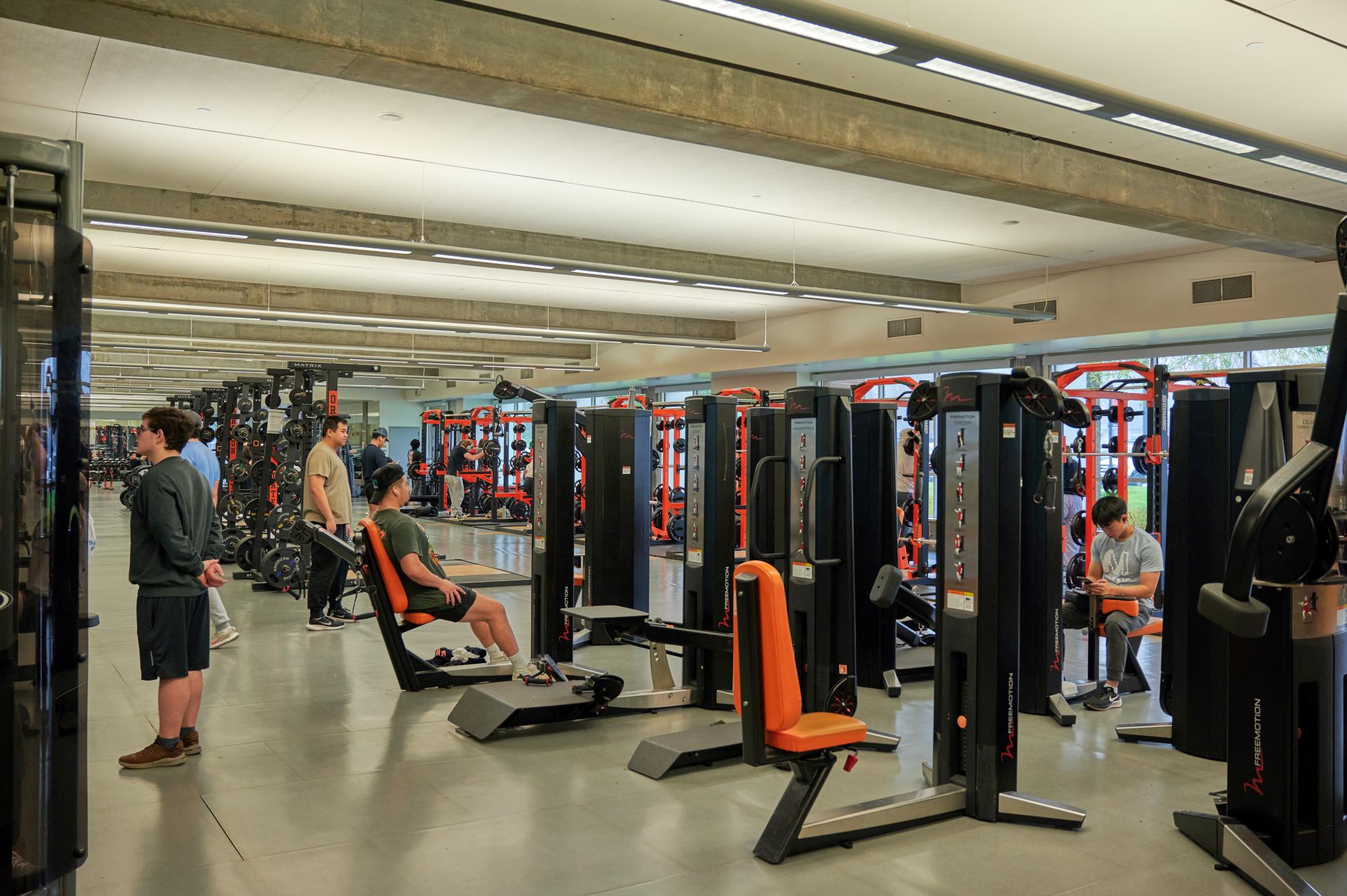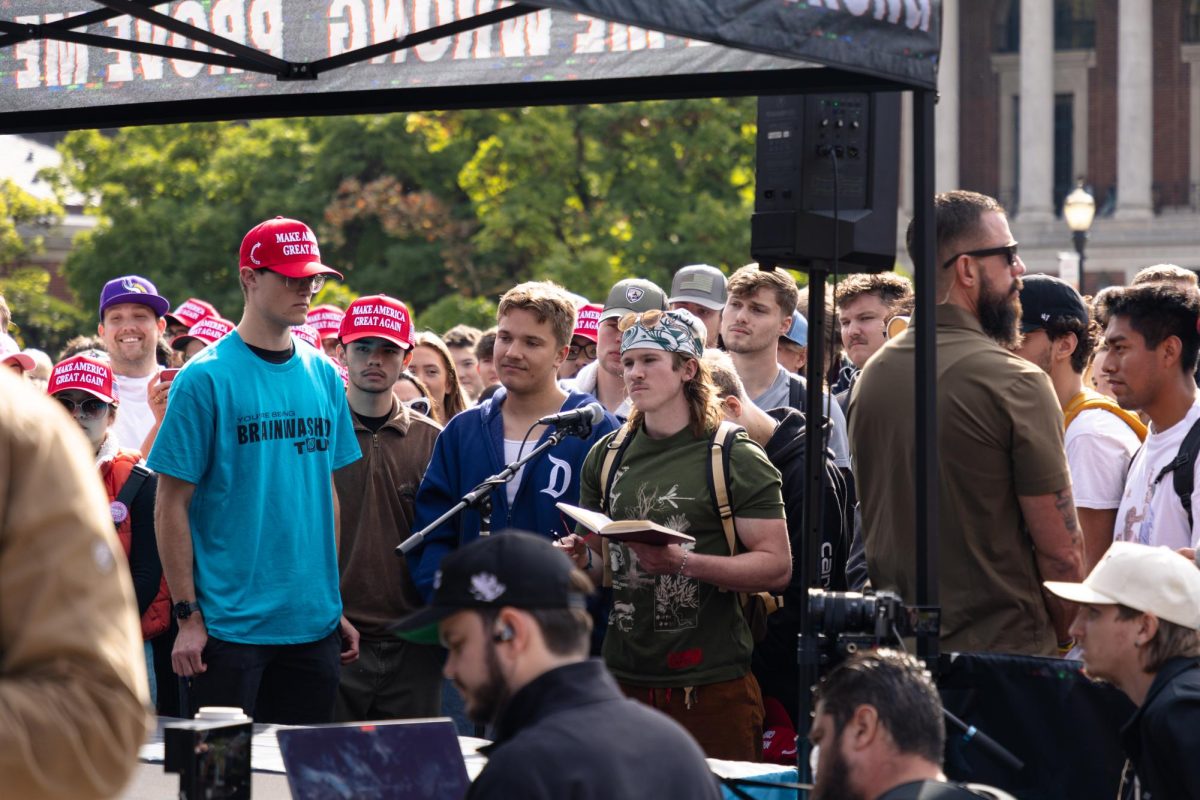A New Year’s resolutionist, worthy goal in hand, faces a slew of trials with no end in sight.
Busy schedules and distractions constantly come, with most resolutions lasting only three to four weeks according to Reagan A. R. Gurung, a professor of psychology in the Oregon State University School of Psychological Science.
While the impact of New Year’s resolutions on OSU facilities looks quite subtle, experts say there are ways for students to make their resolutions stick well into the new year.
For Recreational Sports facilities at OSU, the most visits happen within the first two weeks of each academic term, with participation levels increasing throughout the academic year, according to Brian Hustoles, associate director of marketing and communications for OSU Recreational Sports.
Demand for library study rooms starts strong and continues throughout the term according to Richenda Hawkins, head of the Library Experience and Access Department.
According to Darlene Seltzer, marketing and outreach coordinator for Counseling and Psychological Services, the Mind Spa has been fully booked every day since week three of this term. Seltzer expects this demand to persist throughout the entire year.
Whether or not a resolutionist uses these facilities, making a resolution last takes proper planning and effort.
According to Gurung, resolutions fail because of poor planning. Proper planning involves moving beyond focusing too much on the goal and focusing more on the steps to get there.
This involves thinking about potential barriers or attempts to not keep up with a plan that could interfere with the resolution and coming up with rebuttals to them.
“Let’s say, I plan on going for a run today. Six o’clock comes around and I go ‘it’s dark, I’m tired, blah, blah, blah,’” said Gurung. “‘Well, I’ll wear bright stuff. Oh, I’m tired. Well, let’s go out for at least 10 or 15 minutes.’”
According to Gurung, having such a plan to anticipate these interferences makes the resolutionist more likely to stick to their resolution.
“There is no magic bullet. Change takes effort. Change takes commitment, and those are two really keywords,” Gurung said. “You’ve got to be ready to put in effort; you’ve got to be ready to commit.”
Hustoles recommends seeking outside support for starting new habits, whether that be the Academic Success Center for academic resolutions, the OSU Craft Center for creative resolutions or the Career Center for career-related resolutions.
According to Danielle Caldwell, fitness and wellness foundations coordinator at OSU Recreational Sports, starting with small goals for physical activity helps to avoid burning out in the first week or two. Cathy Sullivan, assistant director of fitness and wellness at OSU Recreational Sports, advised finding a workout buddy or putting it in a calendar.
“Start with one to two days of shorter duration activity. As you get stronger and fitter, you can gradually add more frequency and duration,” Caldwell said. “Pick physical activities you actually enjoy. Enjoyment is really important for motivation and consistency.”
According to Hustoles, the free Find Your Fit program introduces students to recreation opportunities with tours to Recreational Sports facilities and discussions on wellness programs with Fitness and Wellness Representatives, who also act as workout partners.
The 180 offerings provided by Recreational Sports in the winter include 63 weekly group fitness classes, 20 Adventure Leadership Institute programs and 20 Intramural Tournaments and Events, according to Hustoles.
As for eating healthier, UHDS offers an menu nutrition calculator for students to help guide their on-campus food choices. According to Kerry Paterson, director of campus dining and catering, the calculator uses data and guidelines from the USDA to provide recommended dietary allowances.
“UHDS aims to provide a wide variety of food options across campus, including options that help students pursue healthy eating at OSU,” Paterson said. “UHDS also incorporates many of the Menus of Change principles for food offerings in our locations, further supporting healthy, sustainable menu choices.”
Making a new habit takes around six months of practice to really stick, according to Gurung. Referencing the Stages of Change, Gurung said that the likelihood of success in changing depends on the stage of change a person is in, with someone who has contemplated changing having a much higher rate of failure than someone who has already committed time and energy.
“Most resolutions involve changing the way you’ve always done something, and that’s why it takes effort,” Gurung said.











































































































